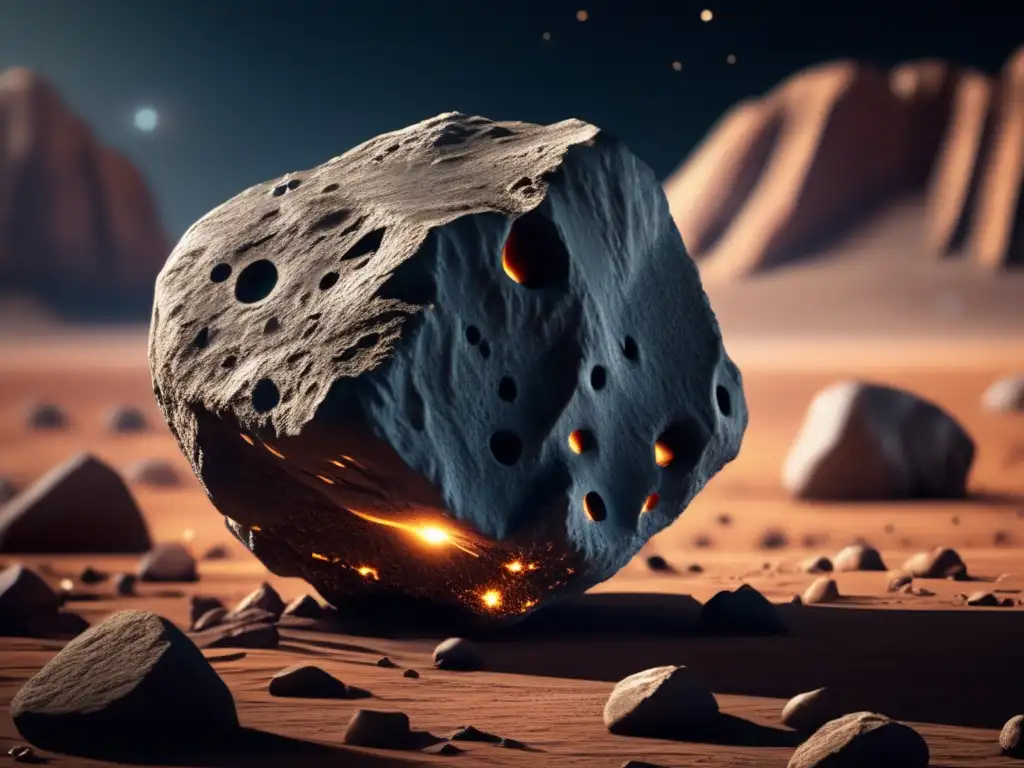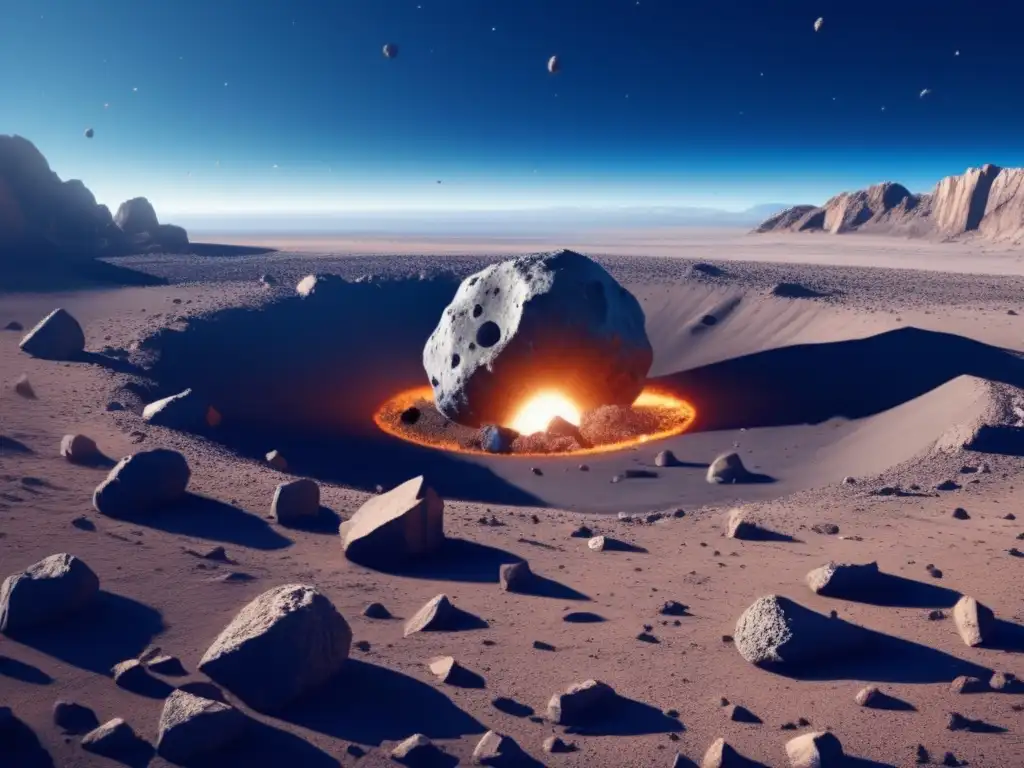A Closer Look At Asteroid Capys

Introduction
Welcome to Asteroid Realm, where we explore the fascinating world of asteroids. In this article, we will take a closer look at asteroid Capys and delve into its important characteristics and significance in our solar system.
Overview

Size and Composition
Asteroid Capys belongs to the Apollo group of asteroids and was discovered on March 4, 1977 by astronomer Charles Kowal. It has an estimated diameter of approximately 2.5 kilometers, making it a relatively small asteroid compared to others in our solar system.
Orbit and Location
The orbit of asteroid Capys is categorized as a Near-Earth Orbit (NEO), meaning it comes into close proximity with Earth's orbit. Its semi-major axis is about 1.51 astronomical units (AU), and it orbits the Sun every 1.37 years. Capys can be found in the inner regions of our solar system, between the orbits of Mars and Jupiter.
Physical Appearance
The exact physical characteristics of asteroid Capys are still being studied. However, based on its spectral classification, scientists believe it to be composed of rocky materials, possibly containing minerals such as silicates and metallic elements.
Exploration and Research

Observations and Imaging
Several ground-based observations and imaging campaigns have been conducted to gather data on asteroid Capys. These observations help astronomers determine its size, shape, rotation period, and other physical properties. Advanced telescopes and imaging techniques have allowed researchers to gain valuable insights into this celestial object.
Spectroscopic Analysis
Through spectroscopic analysis, scientists can study the reflected light from asteroid Capys to determine its composition. By analyzing the wavelengths of light absorbed and emitted by the asteroid, researchers can identify the presence of specific elements or compounds. This data provides clues about the asteroid's origin and formation processes.
Future Missions
Currently, there are no planned missions specifically targeting asteroid Capys. However, with advances in space exploration technology, future missions may include close-up observations, sample return missions, or even potential mining operations on asteroids like Capys. These missions would greatly enhance our understanding of these celestial bodies and their potential resource value.
Impact Hazard and Mitigation

Asteroid Capys and Earth
Due to its orbit crossing Earth's orbit, asteroid Capys is considered a Near-Earth Object (NEO) and is classified as a potentially hazardous asteroid. However, the current calculated trajectory does not pose an immediate threat of collision with our planet. Continuous monitoring and precise calculations allow scientists to track and predict the paths of potentially hazardous asteroids in order to mitigate any potential risks.
Mitigation Strategies
Various strategies have been proposed for mitigating the impact risk posed by asteroids. These include deflection techniques such as kinetic impactors, gravity tractors, and using nuclear devices as a last resort. Research and development in this field are vital to ensure the safety of our planet in the face of potential asteroid threats.
Planetary Defense Collaboration
International organizations, such as NASA's Planetary Defense Coordination Office (PDCO), work closely with other space agencies and research institutions to detect, track, and characterize Near-Earth Objects (NEOs). Through collaborative efforts, scientists can pool resources and knowledge to better understand and develop strategies for mitigating potential asteroid impact hazards.
Frequently Asked Questions

-
Q: What is the size of asteroid Capys?
A: Asteroid Capys has an estimated diameter of about 2.5 kilometers.
-
Q: Is asteroid Capys a potentially hazardous asteroid?
A: Yes, asteroid Capys is classified as a potentially hazardous asteroid due to its orbit crossing Earth's orbit.
-
Q: Are there any planned missions to explore asteroid Capys?
A: Currently, there are no specific missions planned for asteroid Capys. However, future missions may include close-up observations or sample return missions.
-
Q: How do scientists study the composition of asteroid Capys?
A: Spectroscopic analysis allows scientists to analyze the wavelengths of light reflected by the asteroid and determine its composition.
-
Q: What are some mitigation strategies for potential asteroid impacts?
A: Mitigation strategies include kinetic impactors, gravity tractors, and, as a last resort, using nuclear devices.
Conclusion
Asteroid Capys provides us with valuable insights into the complex world of asteroids. Its classification as a potentially hazardous asteroid reminds us of the importance of ongoing research and collaboration in planetary defense. As we continue to explore and understand asteroids like Capys, we gain a deeper understanding of our solar system and our role in protecting our planet.
We hope you enjoyed this article on asteroid Capys and invite you to share your thoughts in the comments section below. Don't forget to subscribe to Asteroid Realm for more fascinating articles and updates. Thank you for joining us on this celestial journey!
Additional Resources

For further reading on asteroids and related topics, please visit the following resources:
- NASA Asteroid Webpage
- International Astronomical Union (IAU) - Near-Earth Objects
- NASA Jet Propulsion Laboratory (JPL) - Asteroid Watch
 Asteroid Misenus: A Comprehensive Analysis
Asteroid Misenus: A Comprehensive Analysis Discovering The Fascinating Features Of Asteroid Palinurus
Discovering The Fascinating Features Of Asteroid Palinurus The Unique Characteristics Of Asteroid Nisus
The Unique Characteristics Of Asteroid NisusIf you want to discover more articles similar to A Closer Look At Asteroid Capys, you can visit the Asteroid Profiles category.
Leave a Reply

Articulos relacionados: